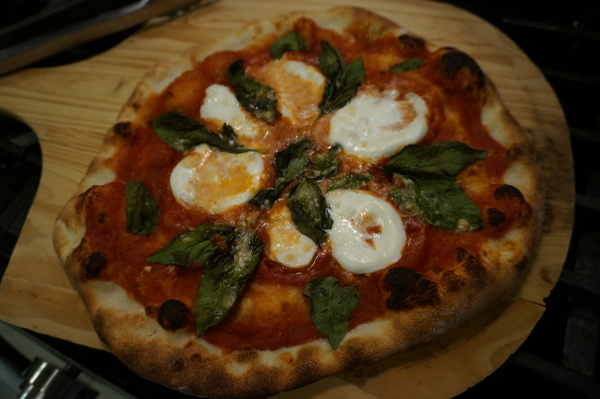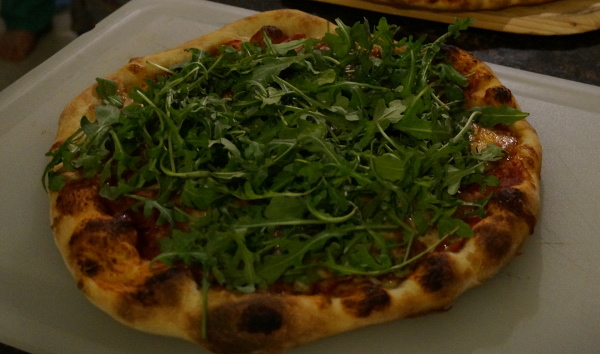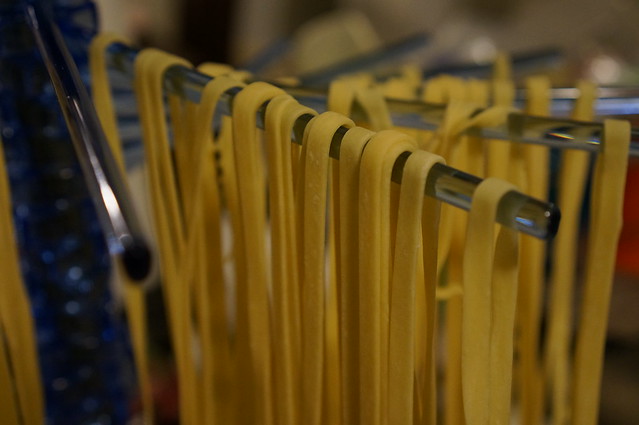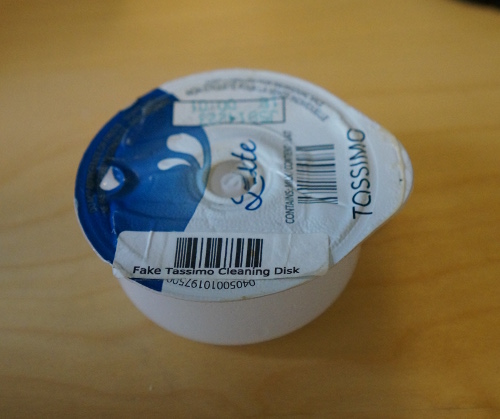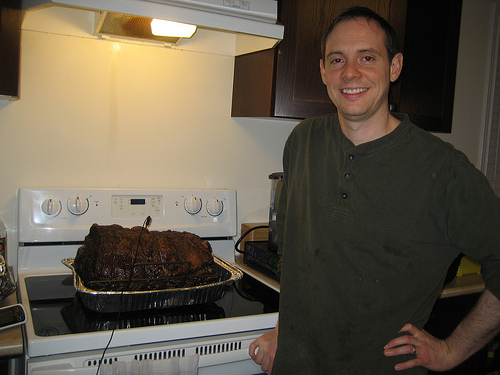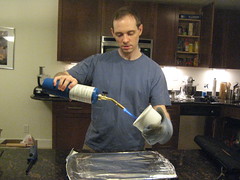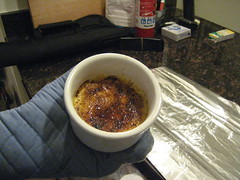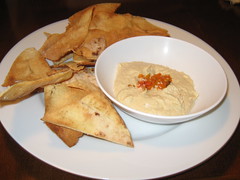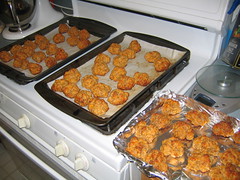Ange and I are back in the States after our wonderful break abroad. Now we’re home again, delighting in such missed American excesses as air conditioning, queen-sized beds, and monolingualism. The latter, actually, is our biggest regret of the trip: the next time we visit a country we’ll have to plan ahead and take a few language courses. Even so, we picked up the basics during our immersion, achieving a fluency on par with, say, a one-year-old who takes the subway a lot.
Our first exposure to Berlin cuisine was at a coffee house where we had a few of the sweet pastries that give the city its name, if I interpret that old JFK myth correctly. Jelly doughnuts, doughnuts shaped like pretzels, strudels, cheesecakes, cheese pastries, and so on were also amply supplied gratis at our hotel, so snarfing down on cakes with tea on the patio quickly became an afternoon tradition during the trip.
For street food, the main contenders seem to be all sorts of sausages, especially the currywurst preparation, and the döner kebab. Currywurst is essentially a sausage sprinkled with curry powder and doused in ketchup. It’s very good — any sausage in Berlin is about 50 times better than the brats one can get at home, though neither of us were really sold on the necessity of the curry powder. Not bad, just different. The döner kebab is more or less a gyro served in a spongy, focaccia-like pita, slammed with enough meat and vegetables to make holding it nearly impossible. I miss them already.
Our best dinner in a standard restaurant was at Florian, a German/Austrian restaurant around the corner from our hotel. The selection was game-influenced: Angeline had duck and I had a roast pig, all served with a hearty gravy and various starches. Both dishes were excellent; you can’t go wrong with roasted animals.
However, the culinary highlight of our trip was with the so-called “Shy Chef,” an underground restaurant. Our friends turned us onto this by sending us a story by Gisela Williams in a little-known rag, The New York Times. We were fortunate enough to grab a reservation the week after the story ran.
The evening before dinner, we got the email leading us to the restaurant’s secret location. Upon arriving, we found our way into a small Berlin flat with a table set for four. The proprietors are obvious bibliophiles, as is instantly inferred from the books spilling out of wall-length, floor-to-ceiling bookcases, and underscored by the Papa-inspired absinthe cocktails handed to us as soon as we entered the room. (As an aside, if number of bookstores is any indication, Germans are enthusiastic readers. We passed three independent bookstores every morning during the 50 meter walk to our nearby café. A far cry from our highly polished, soul-starved Borders and B&Ns.)
The hidden supper club is a wonderful concept: it’s very much like a dinner party with friends, only you don’t know your friends until you get there. The fare is as good as in any restaurant, but the authenticity and intimacy are unmatched. Our fellow diners hailed from NYC and Oxford and made for excellent company, as did our hosts.
I won’t go into too much detail of the menu, lest it lose some of the mystique, but the highlights for me were a velvety garlic-cauliflower purée with an inventive parmagiano reggiano “gratin”; thin-sliced salmon in olive oil with German bleu cheese, apple and cucumber matchsticks; and a very nice salty, paper-thin ham that recalled to me the country ham my Tennessean relatives cured themselves. The dishes were accompanied by generous wine pairings, together more wine than Angeline and I have had in the previous year or so, but all of them excellent choices. As the gentleman from Oxford said, the entire experience was “just brilliant,” and I am sure we’ll remember this dinner for quite some time.
